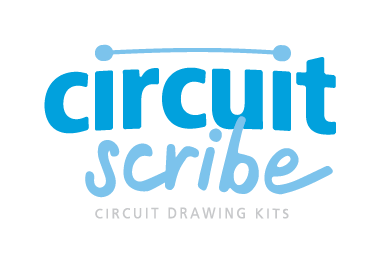The world of electricity right at their fingertips!
Watch and learn with your child as they discover how electricity works through a series of fun and educational projects using our Circuit Scribe products.
High Five Detector

Step One
Introduction
High-fives are cool, they don't usually have enough flashy lights to make them special. In this circuit we’ll hack the high five to make a light turn on when your hands come together. This project uses an amplifier circuit that utilizes the conductivity of your own skin as part of the circuitry.
Step Two
Is Skin Conductive?
Let's try a quick experiment to see if your fingers can light up an LED. Leave a gap in the circuit shown, and press your fingers across it to try to close the circuit. Does the LED come on? It might be extremely faint, or just a very dim blue or red dot! This shows that your skin can conduct current, but it has a very high resistance.
In the next step, we'll sense this small level of conductivity using the NPN transistor module.
Step Three
NPN Transistor Circuit
The NPN transistor is a current amplifier. Instead of controlling the flow of current physically with a slider, dial, or switch, you control it electrically by flowing a tiny amount of current through the base foot.
Start by using the circuit stencil and Circuit Scribe to draw pads for these modules:
• Battery
• LED
• Transistor (3 pads)
• 2 extra pads for your fingers
You'll see how everything comes together in the next step!
Step Four
High Five Time!
You’ve done a great job making the circuit so far. We think you deserve a high-five! Place one finger on one pad, and ask a friend to touch the other. With your spare hands give each other a celebratory high-five or fist bump.
Tip: Scientists commonly use this circuit when they shout “Eureka” to get a light bulb to turn on over their head.
What happened when your hands touched?
○ The LED blinks.
○ The LED turns on.
○ Nothing.
Step Five
NPN Transistor Circuit
The NPN transistor is a current amplifier. Instead of controlling the flow of current physically with a slider, dial, or switch, you control it electrically by flowing a tiny amount of current through the base foot.
Start by using the circuit stencil and Circuit Scribe to draw pads for these modules:
• Battery
• LED
• Transistor (3 pads)
• 2 extra pads for your fingers
You'll see how everything comes together in the next step!
Step Six
Conductivity Time!
If you did the Intro to Circuit Scribe lesson, you have created a conductivity meter with two empty Circuit Scribe pads. Now, since your skin's conductivity is amplified you can extend those pads with your arms and create a GIANT conductivity meter! Instead of just testing small things like paper clips, you and a friend can hold larger items and see if they are conductors or insulators.
Tip: the brightness of the LED will roughly correspond to how conductive the object is.
What objects can you hold together that will conduct electricity? What would happen if you touch an insulating material like a plastic bottle?







